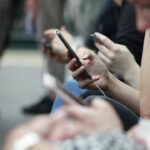Smartphones have become an integral part of our daily lives, and this is no different in the Philippines. Over the past decade, smartphones have seen a significant rise in popularity and usage in the country. This article will explore the history of smartphones in the Philippines and discuss their importance in the daily lives of Filipinos.
The introduction of smartphones in the Philippines can be traced back to the early 2000s when Nokia dominated the market with its iconic “brick” phones. These devices were primarily used for calls and text messaging, with limited internet capabilities. However, as technology advanced, so did the capabilities of mobile phones.
The introduction of smartphones, such as the iPhone and Android devices, revolutionized the way Filipinos interacted with their mobile devices. These smartphones offered a wide range of features and applications that allowed users to browse the internet, access social media platforms, play games, and perform various tasks on-the-go.
Today, smartphones have become an essential tool for Filipinos in their daily lives. From communication to entertainment, information gathering to online shopping, smartphones have become a necessity for many individuals in the country.
Key Takeaways
- Smartphone penetration in the Philippines is rapidly increasing, with over 70% of the population owning a smartphone.
- Smartphones are bridging the digital divide in the Philippines, providing access to the internet for those who previously had limited connectivity.
- Social media usage on smartphones is transforming communication and connectivity in the Philippines, with over 70 million active social media users.
- E-commerce is being revolutionized by smartphones in the Philippines, with mobile shopping becoming increasingly popular.
- Smartphones are enhancing education in the Philippines, with mobile technology providing access to learning and knowledge sharing opportunities.
Smartphone Penetration in the Philippines: A Statistical Overview
According to recent statistics, smartphone ownership in the Philippines has seen a significant increase over the years. In 2020, it was reported that around 70% of Filipinos owned a smartphone. This number is expected to continue growing as more affordable smartphone options become available in the market.
When compared to other countries in the region, the Philippines ranks among the top countries with high smartphone penetration rates. In fact, it is estimated that smartphone penetration in the Philippines is higher than that of neighboring countries such as Indonesia and Thailand.
The rise in smartphone ownership can be attributed to several factors. Firstly, the affordability of smartphones has increased over time, making them more accessible to a wider range of consumers. Additionally, the availability of affordable data plans and the expansion of mobile network coverage have also contributed to the increase in smartphone usage in the country.
Smartphones and the Internet: Bridging the Digital Divide in the Philippines
One of the significant impacts of smartphones in the Philippines is their role in bridging the digital divide. In a country where access to the internet was once limited to those with desktop computers or laptops, smartphones have provided a gateway to the online world for many Filipinos.
With the increasing availability of affordable smartphones, more Filipinos now have access to the internet. This has had a profound impact on various aspects of society, including education, business, and government services.
In terms of education, smartphones have allowed students to access online learning materials and resources, even in remote areas where traditional access to education may be limited. This has opened up new opportunities for learning and knowledge sharing, allowing students to access information and educational content anytime and anywhere.
In the business sector, smartphones have revolutionized the way entrepreneurs and small businesses operate. With the rise of e-commerce platforms and mobile payment systems, businesses can now reach a wider audience and conduct transactions online. This has led to the growth of online businesses and has provided opportunities for individuals to start their own ventures.
Furthermore, smartphones have also improved access to government services. With mobile applications and online portals, citizens can now easily access government services such as applying for identification cards, paying taxes, and accessing important information. This has made government services more accessible and efficient for Filipinos.
Smartphones and Social Media: Transforming Communication and Connectivity
| Metrics | Smartphones | Social Media |
|---|---|---|
| Number of users worldwide | 3.8 billion | 3.6 billion |
| Percentage of internet users accessing via mobile | 52.2% | N/A |
| Most popular social media platform | N/A | |
| Percentage of social media users accessing via mobile | N/A | 98% |
| Time spent on social media per day | N/A | 2 hours and 24 minutes |
| Percentage of smartphone users who check their phone within 5 minutes of waking up | 80% | N/A |
| Percentage of smartphone users who check their phone within 5 minutes of going to bed | 60% | N/A |
The rise of smartphones in the Philippines has also been closely linked to the popularity of social media platforms. Social media has become an integral part of Filipino culture, with millions of Filipinos actively using platforms such as Facebook, Instagram, Twitter, and YouTube.
Smartphones have played a significant role in driving social media usage in the country. With the ability to access social media platforms anytime and anywhere, Filipinos have become more connected than ever before. Social media has transformed the way Filipinos communicate and connect with others, whether it be with friends and family or with businesses and brands.
Social media has also become a powerful tool for information dissemination and activism in the Philippines. During times of crisis or political unrest, social media platforms have been used to spread news, organize events, and raise awareness about various issues. This has given Filipinos a platform to voice their opinions and participate in public discourse.
Smartphones and E-Commerce: Revolutionizing the Way Filipinos Shop
The rise of smartphones in the Philippines has also led to the growth of e-commerce in the country. With the increasing number of Filipinos owning smartphones, more people are now turning to online shopping as a convenient and accessible way to purchase goods and services.
E-commerce platforms such as Lazada, Shopee, and Zalora have gained popularity among Filipinos, offering a wide range of products at competitive prices. These platforms have made it easier for individuals to shop online, with features such as cash on delivery and easy returns.
The advantages of e-commerce in the Philippines are numerous. Firstly, it provides access to a wider range of products that may not be available locally. This allows consumers to find unique items or products that are not commonly found in physical stores.
Secondly, e-commerce offers convenience and accessibility. With smartphones, Filipinos can shop online anytime and anywhere, eliminating the need to visit physical stores. This is particularly beneficial for individuals living in remote areas or those with limited mobility.
However, there are also challenges that come with e-commerce in the Philippines. One of the main challenges is logistics and delivery. The archipelagic nature of the country poses challenges in terms of transportation and delivery infrastructure, which can result in delays or difficulties in delivering products to customers.
Another challenge is trust and security. With the rise of online shopping, there has also been an increase in online scams and fraudulent activities. This has led to concerns among consumers about the safety of their personal and financial information when making online transactions.
Despite these challenges, e-commerce in the Philippines continues to grow, driven by the increasing smartphone penetration in the country. As more Filipinos gain access to smartphones and the internet, the e-commerce industry is expected to further expand and evolve.
Smartphones and Education: Enhancing Learning and Knowledge Sharing

Smartphones have also had a significant impact on education in the Philippines. With the increasing availability of smartphones, students now have access to a wealth of educational resources and tools at their fingertips.
Smartphones have become a valuable tool for learning, allowing students to access online textbooks, educational apps, and interactive learning materials. This has made learning more engaging and interactive, allowing students to explore concepts and topics in a more dynamic way.
In addition to accessing educational content, smartphones have also improved access to education for individuals in remote areas or those who may not have access to traditional educational institutions. Online courses and distance learning programs have become more accessible through smartphones, allowing individuals to pursue education at their own pace and convenience.
Furthermore, smartphones have also facilitated knowledge sharing among students and educators. With social media platforms and online forums, students can collaborate with their peers, ask questions, and share resources. This has created a sense of community among learners and has encouraged collaboration and knowledge exchange.
Smartphones and Health: Improving Access to Healthcare Services
Smartphones have played a crucial role in improving access to healthcare services in the Philippines. With the increasing availability of mobile health applications and services, Filipinos can now easily access healthcare information, consult with healthcare professionals, and monitor their health using their smartphones.
Mobile health applications allow individuals to track their fitness goals, monitor their diet, and manage chronic conditions such as diabetes or hypertension. These applications provide valuable information and tools to help individuals take control of their health and well-being.
In addition to personal health management, smartphones have also facilitated telemedicine services in the Philippines. With telemedicine, individuals can consult with healthcare professionals remotely, eliminating the need for physical visits to clinics or hospitals. This is particularly beneficial for individuals in remote areas or those with limited access to healthcare facilities.
Mobile health services have also been used to raise awareness about various health issues and provide information on preventive measures. With the ability to reach a wide audience through social media platforms, healthcare organizations and government agencies can disseminate important health information and promote healthy behaviors.
Smartphones and Agriculture: Empowering Farmers with Mobile Technology
Smartphones have also had a significant impact on agriculture in the Philippines. With the increasing availability of mobile technology, farmers can now access valuable information and tools to improve their farming practices and productivity.
Mobile applications and services provide farmers with real-time weather updates, market prices, and agricultural best practices. This allows farmers to make informed decisions about when to plant, harvest, or sell their crops. It also helps them optimize their resources and reduce waste.
Furthermore, smartphones have also facilitated access to financial services for farmers. With mobile banking applications, farmers can easily access their accounts, make transactions, and apply for loans. This has provided farmers with greater financial flexibility and has empowered them to invest in their farms and improve their livelihoods.
Mobile technology has also enabled farmers to connect with buyers directly through online platforms. This eliminates the need for intermediaries and allows farmers to get fair prices for their products. It has also opened up new markets for farmers, allowing them to reach a wider audience and sell their products beyond their local communities.
Smartphones and Transportation: Enhancing Mobility and Accessibility
Smartphones have had a significant impact on transportation in the Philippines, enhancing mobility and accessibility for individuals across the country. With the rise of ride-hailing applications such as Grab and Uber, Filipinos now have access to convenient and affordable transportation options.
Ride-hailing applications have revolutionized the way Filipinos commute, providing a safe and reliable alternative to traditional modes of transportation. With the ability to book a ride using their smartphones, individuals can easily navigate through traffic and reach their destinations in a timely manner.
Furthermore, smartphones have also facilitated the use of navigation applications such as Google Maps, Waze, and Moovit. These applications provide real-time traffic updates, alternative routes, and public transportation information. This has made it easier for individuals to navigate through the city and plan their journeys more efficiently.
In addition to ride-hailing and navigation applications, smartphones have also enabled the use of mobile payment systems for transportation. With applications such as GCash and PayMaya, individuals can easily pay for their fares using their smartphones, eliminating the need for cash transactions.
Overall, smartphones have improved mobility and accessibility in the Philippines, making it easier for individuals to travel and navigate through the country’s busy cities.
The Future of Smartphones in the Philippines and Beyond
The future of smartphones in the Philippines looks promising. With the increasing affordability of smartphones and the expansion of mobile network coverage, more Filipinos will have access to these devices and the internet. This will further drive digital transformation in various sectors such as education, healthcare, agriculture, and transportation.
In addition to the Philippines, smartphones are also expected to play a significant role in other countries in the region and beyond. As technology continues to advance and become more accessible, smartphones will become an essential tool for individuals around the world.
However, it is important to address the challenges that come with smartphone usage, such as privacy concerns, digital literacy, and cybersecurity. Governments, organizations, and individuals must work together to ensure that smartphones are used responsibly and ethically.
In conclusion, smartphones have become an integral part of the daily lives of Filipinos, transforming the way they communicate, access information, and conduct various tasks. With the increasing availability of smartphones and the internet, the future looks bright for the Philippines and other countries in the region. Smartphones have the potential to bridge the digital divide, improve access to essential services, and empower individuals to lead more connected and productive lives.
Check out this article on the NUU B20 Unlocked Android Cell Phone. It’s a versatile dual SIM 5G device that offers impressive features. With its powerful performance and sleek design, this smartphone is perfect for those who want a reliable and high-speed connection. Whether you’re browsing the web, streaming videos, or playing games, the NUU B20 delivers a seamless experience. Don’t miss out on this amazing smartphone option in the Philippines!









